Bert's Town - Part 01 - The Outlying Areas
w/e 22 February 2009
All this week's pictures were taken
with a Kodak DX6490

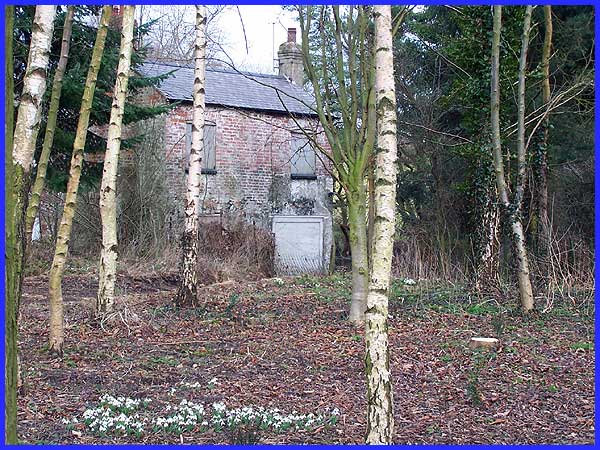
The main road between Eastwood and Brinsley is Mansfield Road
and a small car park at the Brinsley end allows access to the
former Brinsley Colliery where only the headstocks now remain
as a monument. The footpath from the car park to the headstocks
passes this small derelict cottage that even the flowering snowdrops
cannot disguise the fact that it is desperately in need of some
tender loving care. This is Vine Cottage and it was here that
Lawrence's Aunt Polly lived. Polly's husband was killed in a
mining accident but she lives on as the main character in a short
story by the author called "Odour of Chrysanthemums".
|
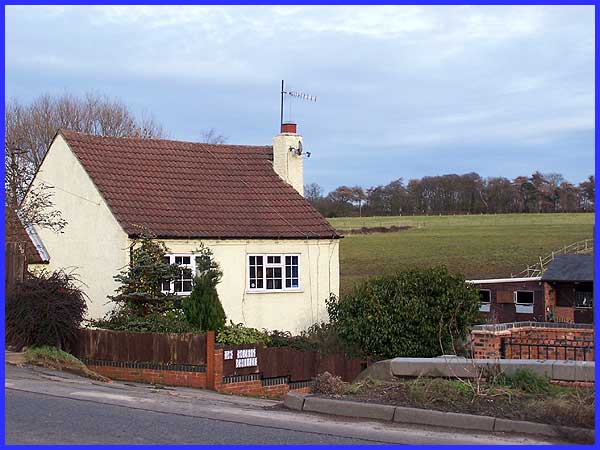
A little closer to Eastwood and still on Mansfield Road is another
small cottage but this has been much better looked after and
is still occupied today. This is Quarry Cottage and it was here
that Arthur John Lawrence, Bert's father, was born on 18th June
1846. Arthur worked at Brinsley Colliery and became known as
a heavy drinker. Arthur's marriage to Lydia Beardsall was not
a happy one and Bert was later to write in a letter in 1910 to
poet Rachel Annand Taylor "I was born hating my father:
as early as ever I can remember, I shivered with horror when
he touched me. He was very bad before I was born." Hardly
a testament to a happy family life.
|
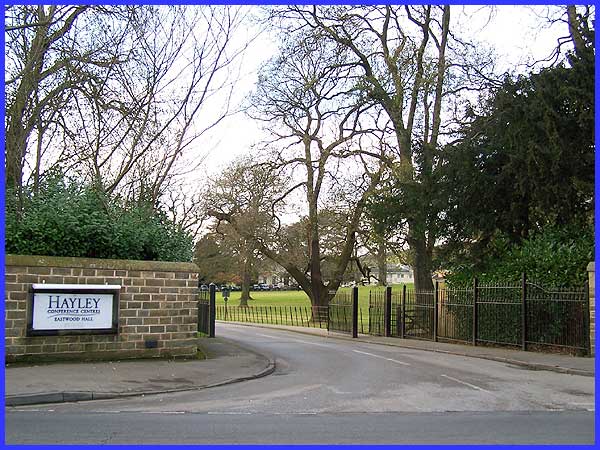
Still on Mansfield Road and near a small area known as Nether
Green is the entrance to Eastwood Hall which Bert was to use
as a location in "Sons and Lovers". The Hall itself
was built in 1810 and was the home of the Walker family, a well-known
name in the mining industry. After the nationalisation of the
coal industry it was used as offices for the National Coal Board
but now as can be seen by the plaque on the wall it continues
to flourish as a conference and functions centre. Durban House
is nearby on the opposite side of Mansfield Road but we'll now
head of to the northeast of the town to an area known as Beauvale.
|
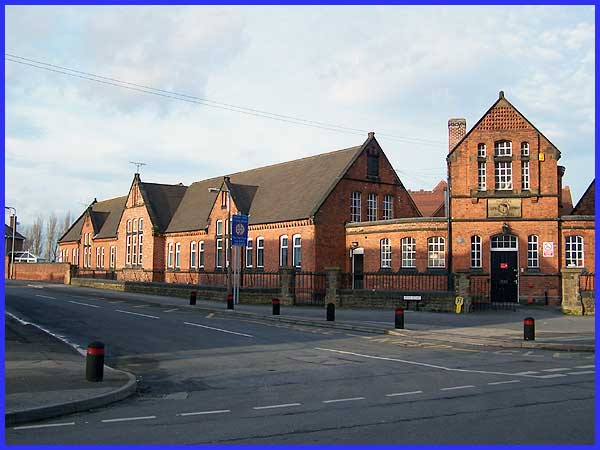
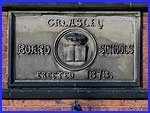 On the
corner of Beauvale and Mill Road is the Greasley Beauvale Primary
School but the engraved stonework above the door on the corner
is inscribed "Greasley Board Schools Erected 1878"
(left). It was here that D H Lawrence received his education
between 1893 and 1898. He had previously attended the Infants
School at the age of four for a short time but did not return
here until he was seven years old. His mother Lydia was a former
schoolteacher, Bert On the
corner of Beauvale and Mill Road is the Greasley Beauvale Primary
School but the engraved stonework above the door on the corner
is inscribed "Greasley Board Schools Erected 1878"
(left). It was here that D H Lawrence received his education
between 1893 and 1898. He had previously attended the Infants
School at the age of four for a short time but did not return
here until he was seven years old. His mother Lydia was a former
schoolteacher, Bert 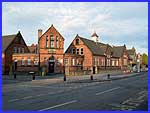 was
a sickly child and contrary to the relationship with his father,
he formed a deep emotional bond with his mother who is credited
with his early literary influences. Although he disliked school
and achieved only average results he was the first pupil from
here to gain a scholarship to Nottingham High School. The family
were already living in poverty and his parent's marriage was
full of friction but at the age of just thirteen Lawrence caught
the seven o'clock train to Nottingham each morning to take up
the scholarship and go to the High School for the next two years. was
a sickly child and contrary to the relationship with his father,
he formed a deep emotional bond with his mother who is credited
with his early literary influences. Although he disliked school
and achieved only average results he was the first pupil from
here to gain a scholarship to Nottingham High School. The family
were already living in poverty and his parent's marriage was
full of friction but at the age of just thirteen Lawrence caught
the seven o'clock train to Nottingham each morning to take up
the scholarship and go to the High School for the next two years.
Beauvale continues past the school in the direction of Moorgreen
and it is in that direction we must head for the next location.
|
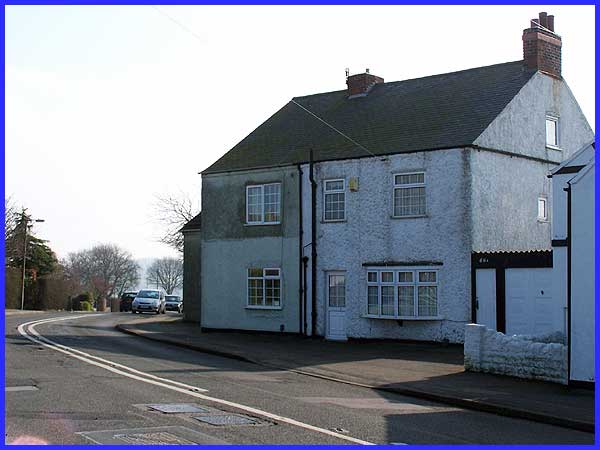
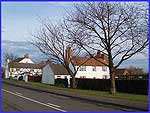 Only about a hundred
yards from the school (right) towards Moorgreen on the left hand
side of the road is the Ram Inn and opposite is this white cottage
(above) which was the original Ram Inn in Lawrence's days. He
incorporated the inn is his story titled "The White Peacock".
Continuing past the inn the road eventually reaches a T-junction
where a left turn would take us to Moorgreen Reservoir and a
right turn to Greasley Church, two more features that Lawrence
worked into his stories in later life. (See Index Page for
relevant links). Only about a hundred
yards from the school (right) towards Moorgreen on the left hand
side of the road is the Ram Inn and opposite is this white cottage
(above) which was the original Ram Inn in Lawrence's days. He
incorporated the inn is his story titled "The White Peacock".
Continuing past the inn the road eventually reaches a T-junction
where a left turn would take us to Moorgreen Reservoir and a
right turn to Greasley Church, two more features that Lawrence
worked into his stories in later life. (See Index Page for
relevant links).
|
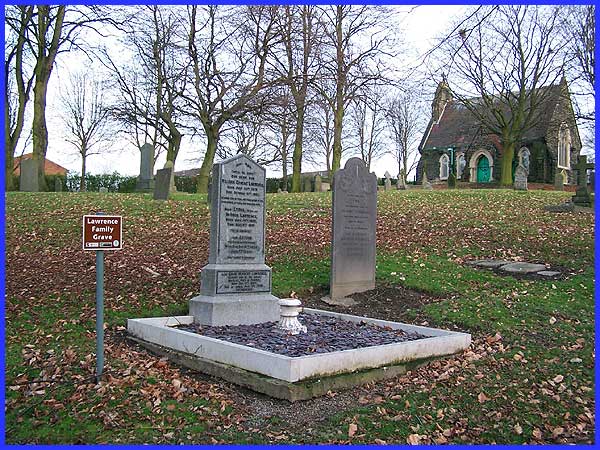
Our final port of call though in this introduction to Bert's
Eastwood is in the south of the town at Eastwood Cemetery. The
Lawrence Family Grave is well marked and the inscription on the
headstone includes three names: Our dear son William Ernest Lawrence
1878 -1901; Lydia 1852 - 1910 and Arthur, died 1924. The foot
of the headstone has an addition inscription which reads as follows:
"Also David Herbert Lawrence, Beloved Son of the Above,
Novelist, Poet & Painter,
Born Sep. 11th 1885, Died at Vence, Mar. 2nd 1930. Unconquered."
This however is not to be taken to mean that he is buried here
for his wife Frieda (d. 1956) moved from Vence in France to the
Kiowa Ranch in New Mexico where she had a small memorial chapel.
Lawrence had been buried in the old Vence cemetery in 1930 but
his remains were exhumed in March 1935 and cremated at Marseille
on March 13. The ashes were passed to Captain Angelo Ravagli,
an Italian infantry officer with whom Frieda had started an affair
in 1925 and he took them to New Mexico where they reside in the
memorial chapel.
|

